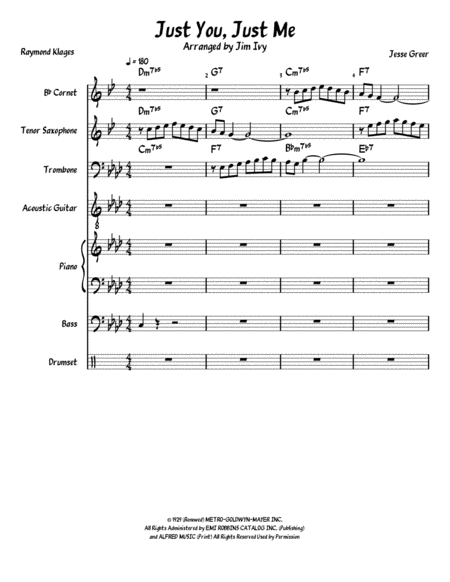Digital Download SKU: A0.981645 Composed by Jesse Greer. Arranged by Jim Ivy. Contemporary. 26 pages. Jim Ivy #5045017. Published by Jim Ivy (A0.981645). Just You, Just Me is a well-known jazz standard. Written in 1929 by Jesse Greer, the lyricist was Raymond Klages.This arrangement is for a small jazz combo and is suitable for both student and professional groups. There have been instrumental recordings (no vocal) by Red Norvo, Stan Tracey, Oscar Peterson and Lester Young, Buddy Rich, Artie Shaw, Les Paul, Benny Carter, Buddy Bregman, Tex Beneke, Coleman Hawkins, Harry James, Erroll Garner, Benny Goodman, Earl Hines, Joe Pass, Buddy Tate and Abdullah Ibrahim, Les Brown, Bill Coleman and Duke Ellington, and, of course, Dave Brubeck. In 1999, Lester Young's recording of Just You, Just Me was inducted into the Grammy Hall of Fame. Most jazz arrangements do not have vocals and, in fact, many of the songs do not have lyrics.Just You, Just Me has been recorded by quite a few vocalists, including Bing Crosby, Petula Clark, Doris Day, Ella Fitzgerald, Nat King Cole, Judy Garland, Jaye P. Morgan, and Rosemary Clooney. The song has also been used in 5 different movies, the last of which was the 1996 Woody Allen film, Everyone Says I Love You.
